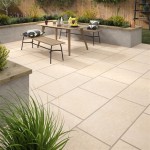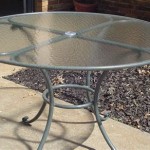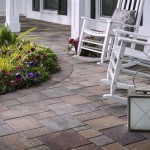Patio Furniture Color Ideas to Elevate Outdoor Spaces
Selecting the appropriate colors for patio furniture is a crucial aspect of creating an inviting and aesthetically pleasing outdoor living space. The chosen color palette significantly influences the overall ambiance, contributing to both the visual appeal and the perceived comfort of the area. Careful consideration should be given to factors such as existing landscape, architectural style, and personal preferences when determining the most suitable colors for patio furniture.
The purpose of this article is to provide a comprehensive overview of patio furniture color ideas, exploring various color schemes and their associated effects, and offering practical guidance on how to incorporate color effectively into outdoor spaces. By understanding the principles of color theory and considering the specific characteristics of the outdoor environment, individuals can make informed decisions that result in a harmonious and visually appealing patio area.
Understanding the Impact of Color on Outdoor Spaces
Color profoundly affects mood and perception, and its application in outdoor settings is no exception. Different colors evoke distinct emotions and associations. Understanding these psychological effects is essential when selecting colors for patio furniture.
For example, cooler colors, such as blues and greens, tend to create a calming and relaxing atmosphere. These colors are often associated with nature, tranquility, and serenity. Conversely, warmer colors, such as reds, oranges, and yellows, can generate a sense of energy, excitement, and sociability. These colors are often perceived as stimulating and inviting.
Neutral colors, such as whites, grays, and browns, provide a versatile foundation that can be easily complemented with bolder accent colors. These colors offer a sense of balance and sophistication, allowing for greater flexibility in decorating and accessorizing the patio space. The intensity and saturation of a color also play a significant role in its overall impact. Muted tones tend to create a more subtle and understated effect, while vibrant hues can add a sense of drama and personality to the outdoor area.
Consideration should also be given to the existing colors within the landscape. The colors of the plants, flowers, and surrounding structures will influence the perceived harmony of the patio furniture. A well-coordinated color scheme will create a cohesive and visually pleasing outdoor environment.
Exploring Popular Patio Furniture Color Palettes
Various color palettes are commonly employed in patio furniture design, each offering a unique aesthetic and contributing to a distinct ambiance. Understanding these palettes can help individuals identify the most suitable options for their specific outdoor spaces.
Monochromatic Scheme: A monochromatic color scheme involves using different shades and tints of a single color. This approach creates a sense of unity and sophistication. For example, a monochromatic blue palette might incorporate navy blue cushions, light blue throw pillows, and a teal-colored umbrella. This scheme is particularly effective for creating a calming and serene outdoor space.
Complementary Scheme: A complementary color scheme utilizes colors that are opposite each other on the color wheel. This creates a dynamic and visually striking contrast. Examples include pairing blue with orange, red with green, or yellow with purple. When using a complementary scheme, it is advisable to select one color as the dominant hue and use the other as an accent.
Analogous Scheme: An analogous color scheme involves using colors that are adjacent to each other on the color wheel. This creates a harmonious and naturally flowing effect. Examples include pairing blue with green and turquoise, or red with orange and pink. This scheme is particularly well-suited for creating a relaxing and inviting outdoor space.
Neutral Scheme: A neutral color scheme relies on whites, grays, beiges, and browns. This approach provides a versatile foundation that can be easily complemented with pops of color through accessories such as throw pillows, planters, and outdoor rugs. A neutral scheme offers a sophisticated and timeless aesthetic, allowing for flexibility in decorating and accessorizing the patio space. Considerations should be made for the hue of neutral tones as they can lean warmer or cooler and impact the overall feeling of the space.
Bold and Vibrant Scheme: A bold and vibrant color scheme incorporates bright and saturated colors such as reds, yellows, and blues. This approach creates a sense of energy and excitement. A vibrant scheme is well-suited for creating a lively and social outdoor space. However, it is important to use these colors judiciously to avoid overwhelming the senses. Consider using vibrant colors as accents against a more neutral backdrop.
Ultimately, the choice of color palette will depend on individual preferences and the desired ambiance of the outdoor space. It is recommended to experiment with different combinations and arrangements to determine the most visually appealing and personally satisfying option.
Practical Considerations for Choosing Patio Furniture Colors
Beyond aesthetics, several practical considerations influence the selection of appropriate colors for patio furniture. These factors include the material of the furniture, the climate of the region, and the maintenance requirements of the chosen colors.
Material Considerations: The material of the patio furniture can significantly impact the appearance of the colors. For example, colors may appear more vibrant on smooth surfaces such as metal or resin, while they may appear more muted on textured surfaces such as wicker or wood. The porosity of the material can also affect how the color is absorbed and retained over time.
Climate Considerations: The climate of the region can also influence the choice of colors. In hot and sunny climates, lighter colors are generally preferred as they reflect sunlight and help to keep the furniture cooler. Darker colors, on the other hand, absorb more heat and can become uncomfortably hot to the touch. In humid climates, it is important to choose colors that are resistant to fading and mildew growth.
Maintenance Considerations: The maintenance requirements of the chosen colors should also be taken into account. Lighter colors tend to show dirt and stains more easily than darker colors, requiring more frequent cleaning. Darker colors, on the other hand, may fade more quickly in direct sunlight. It is important to choose colors that are durable and easy to maintain, based on the anticipated use of the patio furniture.
Sunlight and Fading: Sunlight is a major factor in color fading. Selecting furniture and fabrics specifically designed for outdoor use is crucial. These materials often incorporate UV inhibitors that help to protect the color from fading. Regular cleaning and the use of protective covers during periods of non-use can also help to extend the lifespan of the colors.
Color Psychology: Consider the psychological impact of the colors in relation to the intended use of the patio. If relaxation is the primary goal, opt for soothing blues and greens. If the patio is intended for social gatherings, warmer tones like yellows and oranges may be more appropriate. The color palette should complement the desired mood and atmosphere.
Existing Features: The existing features of the outdoor space, such as the color of the house, the landscaping, and any surrounding structures, should be considered when selecting patio furniture colors. The furniture should complement these features and create a cohesive and harmonious overall aesthetic.
Accessorizing with Color: If hesitant to commit to bold colors for the furniture itself, consider using accessories like cushions, throws, and rugs to introduce pops of color. These accessories are easily changeable, allowing for flexibility in updating the patio's look without significant investment or effort.
By considering these practical factors, individuals can select patio furniture colors that are not only aesthetically pleasing but also durable and easy to maintain, ensuring a lasting and enjoyable outdoor living space.
Choosing the right colors for patio furniture involves a thoughtful process of understanding color psychology, exploring various color palettes, and considering practical factors. The final selection should reflect individual preferences, complement the existing environment, and contribute to the desired ambiance of the outdoor space. By carefully considering these elements, individuals can create a patio area that is both visually appealing and personally enjoyable.

Fun And Functional Outdoor Furniture Ideas Forbes Home

Punch Up Your Patio Decor With Bright Colors
:strip_icc()/101949014-e58473cacaa54656bc82a88667aae0b9.jpg?strip=all)
Outdoor Furniture And Fabric Ideas

77 Patio Decor Ideas Stylish Outdoor Designs And Photos

Make Your Patio Pop With Color The Garden Glove Colorful Furniture Wrought Iron
:strip_icc()/101553364-08234626d7b5450da4e307779037a14f.jpg?strip=all)
16 Patio Furniture Ideas To Make Your Backyard A Destination

50 Best Patio And Porch Design Ideas Decorating Your Outdoor Space

7 Striking Summer Color Combos For Your Outdoor Room

The Best Small Patio Ideas To Enjoy This Summer

25 Fun And Bold Outdoor Decor Ideas With Color Tones Homemydesign Spaces Living Rooms
Related Posts








